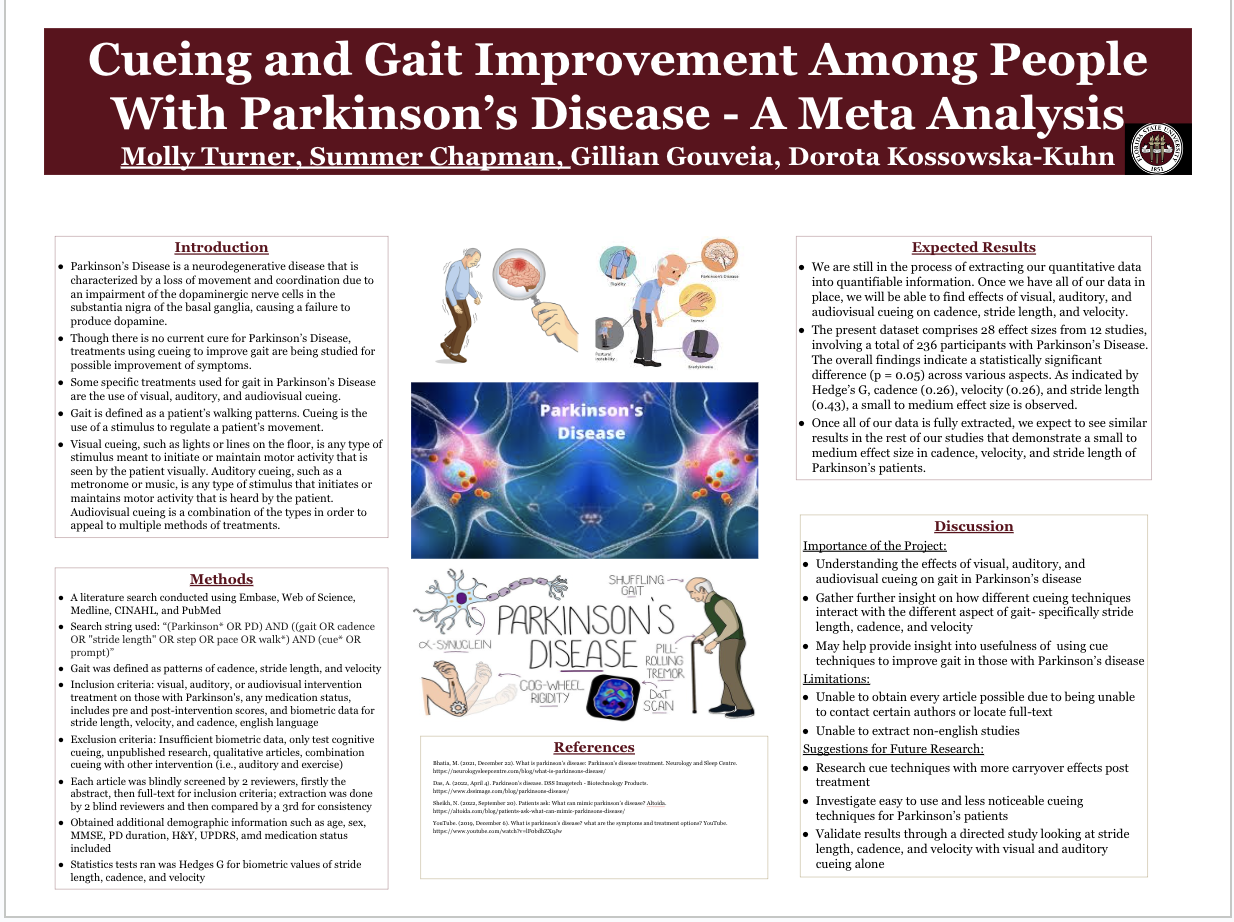Research Symposium
24th annual Undergraduate Research Symposium, April 3, 2024
Molly Turner she/her Poster Session 1: 9:30 am - 10:30 am /354

BIO
Turner is a Junior at Florida State University majoring in Behavioral Neuroscience with minors in Chemistry and Psychology. She is originally from Tennessee, but moved to Florida at the age of 16. She is currently on the Pre-Physician Assistant track and hopes to complete PA school at Florida State as well. Turner has worked on this research project for almost a year now and has loved learning more about Parkinson's Disease and contributing to treatment.
Cueing and Gait Improvement Among People With Parkinson’s Disease - A Meta Analysis
Authors: Molly Turner, Dorota Kossowska-KuhnStudent Major: Behavioral Neuroscience
Mentor: Dorota Kossowska-Kuhn
Mentor's Department: Psychology Mentor's College: College of Arts and Sciences Co-Presenters: Summer Chapman
Abstract
Background: Parkinson’s Disease is a neurodegenerative disease that is characterized by a loss of movement and coordination due to an impairment of the dopaminergic nerve cells in the substantia nigra of the basal ganglia, causing a failure to produce dopamine. Though there is no current cure for Parkinson’s Disease, treatments using cueing to improve gait are being studied for possible improvement of symptoms. Gait is defined as a patient’s walking patterns. Cueing is the use of a stimulus to regulate a patient’s movement.
Methods: The aim of this project is to conduct a meta-analysis using available evidence to examine the effects of auditory, visual, and combined auditory and visual treatments on the gait of Parkinson’s patients. Specifically, this meta-analysis defines gait as patterns of cadence, stride length, and velocity. A literature search was conducted using Embase, Web of Science, Medline, CINAHL, and PubMed. Studies consisted of the application of a visual, auditory, or audiovisual intervention treatment on patients with Parkinson’s disease, measuring changes in cadence, velocity and stride length.
Results: The present dataset comprises 28 effect sizes from 12 studies, involving a total of 236 participants with Parkinson’s Disease. The overall findings indicate a statistically significant difference (p = 0.05) across various aspects. As indicated by Hedge’s G, cadence (0.26), velocity (0.26), and stride length (0.43), a small to medium effect size is observed.
Keywords: Neuroscience, Parkinsons, Gait, Cueing

